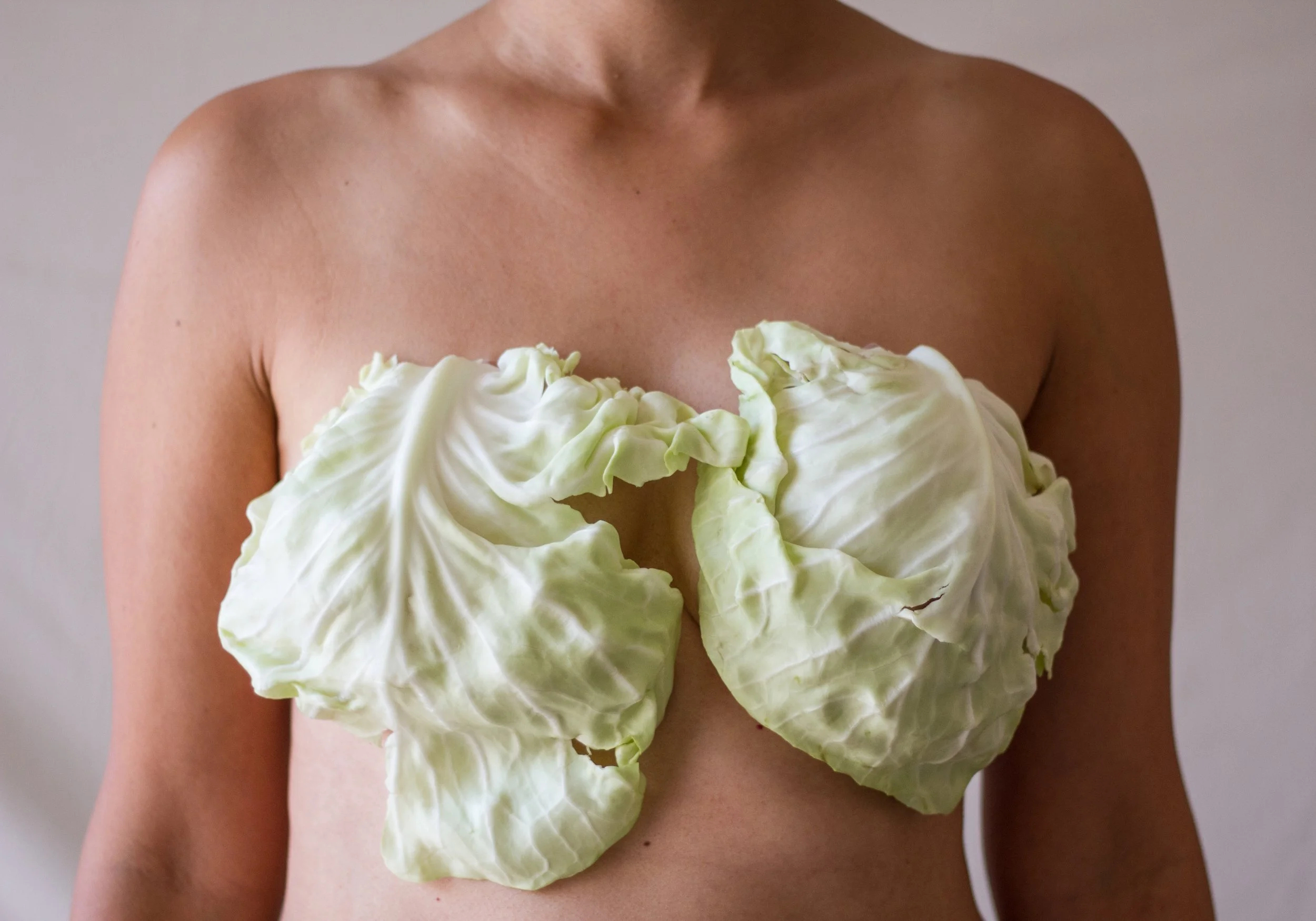Exhibition Statement
In a Time of Milk and Honey is an exhibition connecting three veins of work which consider my maternal body and how my relationship with my body changes with the constant, swift, and significant transformations happening through pregnancy and postpartum. The bodies of work also address how from the viewpoint of motherhood I can reflect on previous negotiation with my body with new understanding.
In the series which share the same title with the show, In a Time of Milk and Honey, I reflect on the struggles and experiences of breastfeeding while using performance based photography and self-portraiture to represent a figure who expresses pain and strength and tells the shared story of many women. The work draws from my personal experiences with breastfeeding for nearly four years and specifically stemmed from my daughter rejecting months of supply due to an increase in lipase, an enzyme that helps the baby digest the fat content of the milk. In these works, breastmilk is both subject and material. Plants which support lactation, such as oats and thistle, become symbols for production and feelings of connecting to a timeless, physical function of my bodies. In the work Santa Saragoza, Patron Saint of Lactation and Labor, I embody the role of a new patron saint (a wink at official patron Saint of breastfeeding being St. Giles, a male hermit) as an act of solidarity and support for other women struggling with breastfeeding and maternal labors. The honey covering the figure symbolizes labor, and connects the efforts of a worker bee to produce honey to that of the mother’s work to produce milk. It also serves as a gold liquid–a parallel to the idea of mother’s milk being gold and I use for its sweetness, thinking about the preciousness of motherhood. A Time of Milk and Honey explores an experience often pushed to belong as a private act in the home within U.S. culture and largely invisible with little education. Representing this experience is also about valuing this vital labor and capturing contemporary depictions to be set within the history of photography.
The group of self-portraits including Booksmart, Shared knowledge (Your life began inside your grandmother), Bodysmart (a mother’s body is a place), and With child, with trees and the beginnings of a series of worksconsidering the body as place. With these works I am thinking about my feminine, maternal body as architecture in relation to care taking. My body becomes shelter, becomes a home, becomes safety and security, a pillar to tether to, a blanket and much more. As a member of a family my body begins to share the attributes of place.
Lastly, Sisterly is a series of photographs depicting gestures synonymous with sisterhood and reflective of my own relationship with my younger sisters and close friends of my youth. These poses are reenacted by adult women, underlining the oddity of these actions when performed outside of adolescence. During my pregnancy and delivery, I felt a sense of loss about the sisterly comfort I once had. This physical bond felt severed. In the hours of labor and challenging physical moments afterward— healing, learning to breastfeed, the anxieties of new parenthood— these thoughts and feelings of longing stayed with me:
“I need my sisters. I wish my best friend was here right now.”
During events of significance, of ceremony, of turmoil, the need of the physical presence of family and friends feel strongest for me. When confronted with moments of great vulnerability, physical and emotional strain, and exposure, there are few people I might let into the room. As I laid nearly bare, in front of my midwife and nurses, thinking I need my sisters, I also thought of how difficult and awkward it might be if they were there. Would they have stayed in the room? That thought is one that nagged at me and split into many other questions—questions about relationship and our female bodies. I wondered why it might be uncomfortable to have my sisters there, who I grew up sharing a bedroom with, bathing with, etc., yet I could be surrounded by strangers without a similar awkwardness, sterilized. As a new mother I’ve had ongoing empowering and demeaning experiences with my body, from continuous changes I must adapt to, to having other humans need me so deeply, to fielding unconsidered questions and comments of strangers and acquaintances. The conversations, even brief ones, are telling of the often singular way some view the female body— as an object of desire.
In parallel, my adolescent, female body, transitioning into womanhood, had to confront equally challenging physical and social changes. The photographs in Sisterly suspend that context, placing two characters into crystalized moments of conflict and comfort. Reflecting on intimate rituals such as hair braiding, sleep overs, and fighting, I hope to unearth conclusions on the natural and imposed sources of the loss of my adolescent sisterly bonds.

















